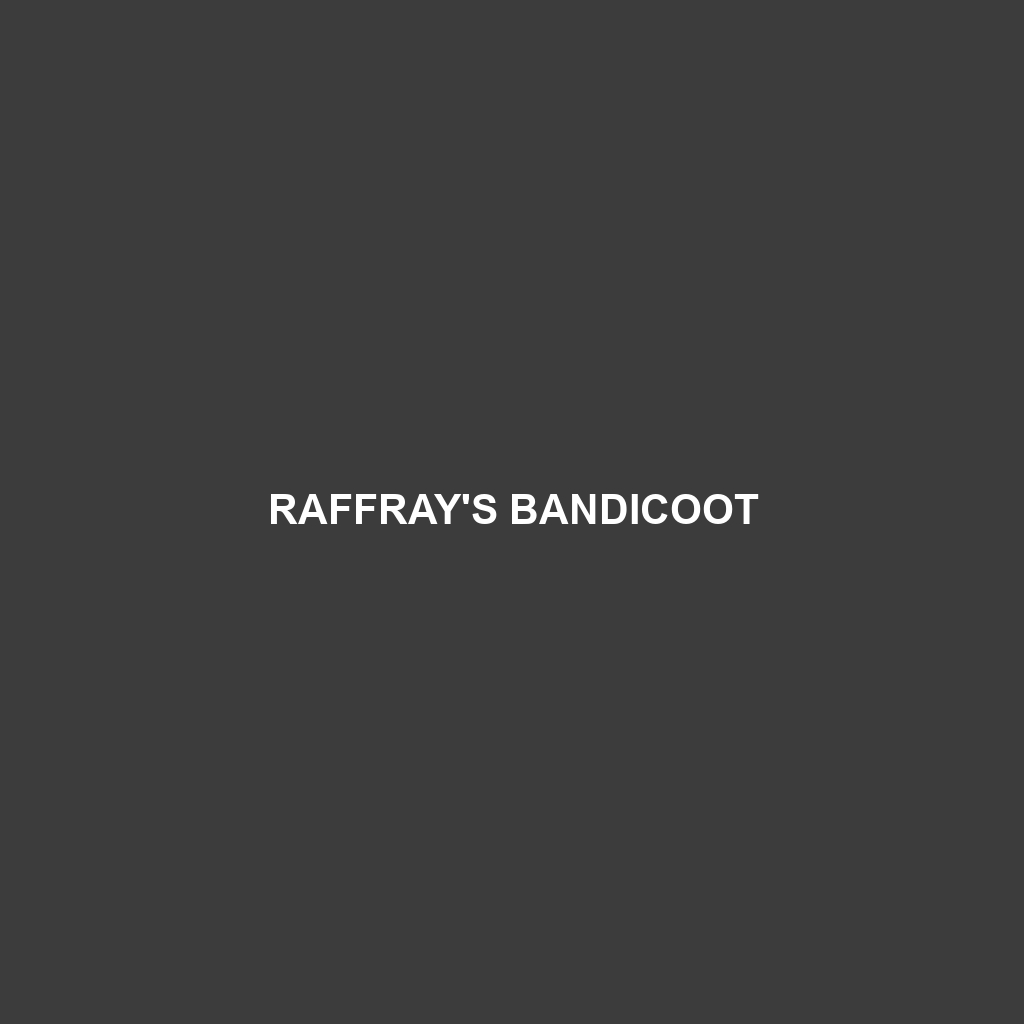Absolutely! Here’s a comprehensive description of Raffray’s Bandicoot for your website:
Raffray’s Bandicoot: A Comprehensive Overview
Raffray’s Bandicoot (Peroryctes raffrayana) is a small to medium-sized marsupial native to the dense forests of New Guinea. Noted for its burrowing habits and nocturnal lifestyle, this elusive creature plays a crucial role in its ecosystem. A member of the Peramelidae family, Raffray’s Bandicoot is distinguished by its pointed snout, robust body, and strong limbs adapted for digging.
Physical Characteristics:
Size: Raffray’s Bandicoot typically measures between 25 and 35 cm (9.8 to 13.8 inches) in body length, with an additional tail length of about 10 to 15 cm (4 to 6 inches). They generally weigh between 0.5 to 1.5 kg (1.1 to 3.3 pounds).
Coloration: The fur of Raffray’s Bandicoot is usually a mix of brown, grey, and black hues, providing excellent camouflage against the forest floor. The underbelly is lighter, often a creamy white or pale grey.
Special Features: This bandicoot has a distinctive tapering snout, which aids in rooting out insects and other invertebrates. Its ears are small and rounded, and the eyes are adapted for nocturnal vision. The forelimbs are particularly strong, with sharp claws designed for digging.
Behavioral Traits:
Social Interactions: Raffray’s Bandicoot is primarily solitary, with individuals only coming together during the breeding season. They are territorial animals, often marking their ranges with scent markings.
Feeding Habits: As omnivores, they have a varied diet that includes insects, small invertebrates, roots, tubers, and fallen fruits. Their foraging behavior involves a lot of digging and rooting, which helps aerate the soil.
Ecological Roles: This bandicoot is a vital part of the forest ecosystem. By digging and foraging, they help in soil turnover and seed dispersal, which promotes plant growth and maintains the health of their habitat.
Habitat:
Raffray’s Bandicoot inhabits the dense tropical and subtropical forests of New Guinea, often preferring areas with thick underbrush. They are adept at navigating the forest floor and can also be found in secondary forests and occasionally in forest edges close to human settlements.
Adaptations:
Burrowing Ability: Their strong forelimbs and sharp claws make them excellent diggers, allowing them to create burrows for shelter and to locate food.
Nocturnal Lifestyle: Being nocturnal helps them avoid many predators and reduces competition for food resources during the day.
Camouflage: Their fur coloration blends seamlessly with the forest floor, providing protection against predators.
Conservation Status:
Currently, there is limited information on the exact conservation status of Raffray’s Bandicoot due to their elusive nature. However, they are potentially threatened by habitat loss due to deforestation and human encroachment. Further research is needed to determine their population trends and to implement effective conservation strategies.
Fun Facts:
Unlike many other marsupials, bandicoots have a relatively short gestation period of around 12 days, one of the shortest among mammals.
Their keen sense of smell helps them locate food buried beneath the soil.
Raffray’s Bandicoot contributes to the ecosystem not only through bioturbation (soil turnover) but also as prey for larger predators, thus being an integral part of the food web.
By understanding and appreciating the unique characteristics and ecological importance of Raffray’s Bandicoot, we can better strive to protect this fascinating creature and the rich biodiversity of its forest home.
Feel free to customize or expand any sections as needed for your website!
